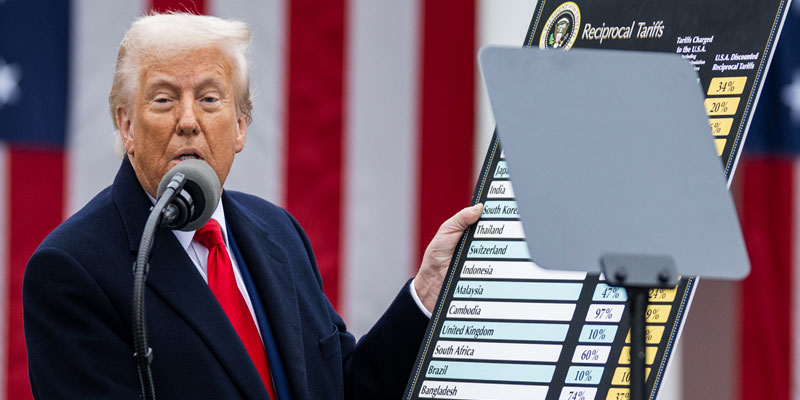Tariff Turmoil and Market Chaos
The United States’ trade policy took a dramatic turn after a federal court blocked most of President Donald Trump's tariffs, ruling he exceeded his constitutional authority. Trump’s aggressive tariff strategy has disrupted global trade flows, battered supply chains, and roiled financial markets. Wednesday’s landmark ruling by the Court of International Trade marks a significant legal and economic turning point.
Tariffs, often announced overnight, became a central pillar of Trump’s economic nationalism, marketed as a defense against trade deficits and foreign manipulation. But critics warned that these sweeping measures triggered inflationary pressures, sowed uncertainty across industries, and stifled business planning. The court’s decision injects new clarity—but also fresh complications—into ongoing trade disputes and global market dynamics.
The Court’s Verdict: Limits on Presidential Power
The court's three-judge panel delivered a strong rebuke, affirming that the U.S. Constitution grants Congress—not the President—the sole authority to regulate international commerce. The ruling invalidates all Trump-imposed tariffs based on the International Emergency Economic Powers Act (IEEPA); a law traditionally used for national security emergencies—not economic policy.
“The President’s use of tariffs is impermissible not because it is unwise or ineffective, but because [federal law] does not allow it,” the judges wrote. They issued a permanent injunction and ordered the Trump administration to reissue orders within 10 days to comply. Within minutes, the administration filed a notice of appeal, challenging the court’s authority and setting up what could become a protracted legal battle.
The ruling marks the first time a president’s use of IEEPA for tariff imposition has been struck down. Trump had argued the U.S. trade deficit constituted a national emergency, but the court disagreed—stating such economic reasoning falls under congressional jurisdiction.
Economic Fallout: Trade and Finance Shake as Tariffs Collapse
Financial markets immediately cheered the decision. The U.S. dollar surged against major currencies, Wall Street futures climbed, and Asian stocks saw gains in early trading. Investors, spooked for years by trade unpredictability, welcomed the prospect of stability.
But the path forward is far from smooth. Trump’s tariff regime has shaped negotiations with China, the EU, and dozens of other nations. With those tools now legally curtailed, the U.S. must find alternative forms of leverage—or risk losing ground in ongoing trade talks.
The collapse of these tariffs also creates strategic ambiguity. Businesses that had priced products, structured contracts, or relocated manufacturing in response to Trump’s tariffs are left scrambling to reassess. Many had absorbed higher input costs, passed them onto consumers, or reduced operations. Now, they face additional confusion.
Businesses Hit Hard: Legal Battles and Operational Strain
The case stemmed from lawsuits brought by the Liberty Justice Center on behalf of small U.S. businesses, along with 12 states. The plaintiffs included companies importing wine, musical instruments, and educational kits—all of which argued the tariffs made their operations unviable.
“There is no question here of narrowly tailored relief; if the challenged Tariff Orders are unlawful as to Plaintiffs, they are unlawful as to all,” the court declared.
At least five additional lawsuits remain pending. Critics argue that Trump’s sudden tariff swings created legal gray zones and prompted businesses to take on excessive risk without due process. Oregon Attorney General Dan Rayfield, leading one of the suits, called the tariffs “reckless and economically devastating.”
Trump had framed tariffs as a nationalist economic weapon—claiming they would bring back U.S. manufacturing jobs and reduce the country’s $1.2 trillion goods trade deficit. Instead, many companies were forced to navigate sudden cost hikes, retaliatory tariffs abroad, and contracting margins. Some firms even offshored further to avoid U.S. duties, an ironic twist to the policy’s original intent.
A Legal Precedent with Global Implications
The court’s ruling is not just a domestic decision—it sets a precedent for how the U.S. executive can act on trade in a globalized world. The verdict directly challenges the idea that a president can unilaterally weaponize tariffs without congressional oversight.
If upheld on appeal, the decision could permanently constrain future presidents from invoking emergency powers for economic policy—a move that reasserts legislative authority in a critical area.
While the Trump administration has vowed to challenge the ruling, the decision already casts a long shadow. Trade partners may view future U.S. tariff threats as legally shaky, potentially weakening America’s negotiating position abroad.
A Return to Checks and Balances in Trade Policy
This moment represents a course correction not just in trade policy, but in the balance of power within U.S. governance. The court has drawn a sharp line between national emergency and economic policymaking—reaffirming that even bold presidential strategies must conform to the Constitution.
As the U.S. recalibrates its trade tools, the ruling serves as a reminder: economic disruption may be swift, but legal accountability is enduring. With markets responding positively and businesses hoping for stability, America may finally be heading toward a more predictable and rules-based trade environment.
(With agency inputs)















